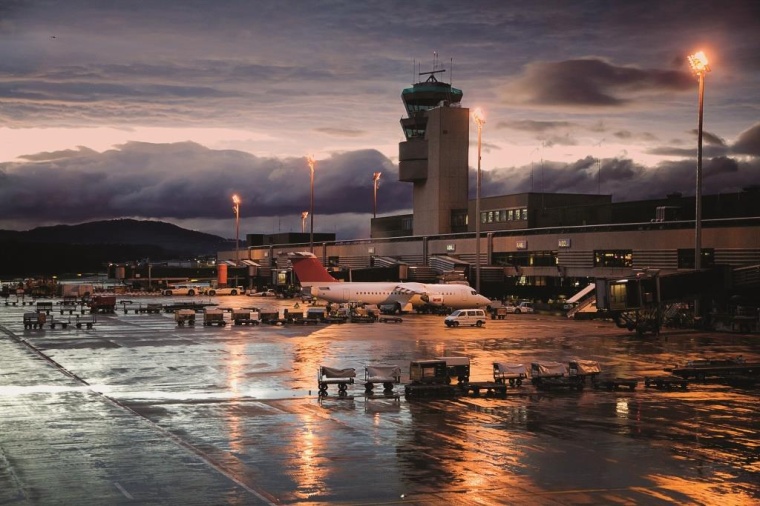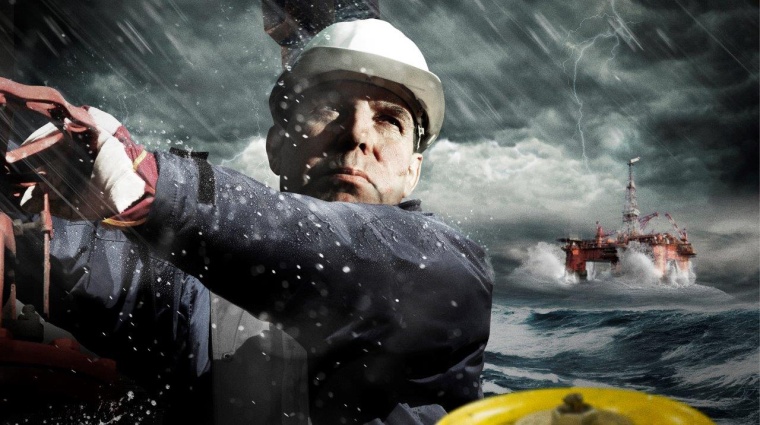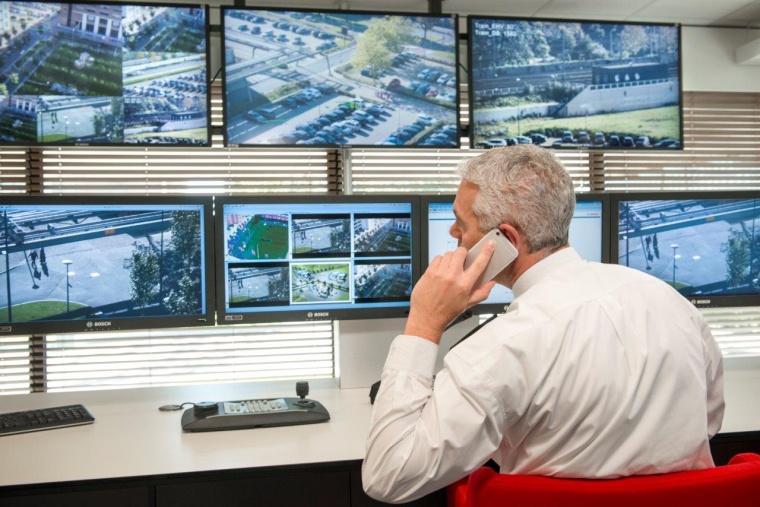Perimeter protection – More than meets the eye
Perimeter protection is essential in critical infrastructures such as airports or utilities. Video analytics can greatly improve security in such environments while at the same tim...




Perimeter protection is essential in critical infrastructures such as airports or utilities. Video analytics can greatly improve security in such environments while at the same time lowering costs and network strain.
286 perimeter breaches in ten years - this was the result of an Associated Press investigation on the busiest 31 airports in the United States. These incidents happened despite the fact that after the September 11 attacks, US airports had invested hundreds of millions of dollars to upgrade their perimeter fencing. They basically prove two things: First, it is anything but easy to protect large areas, and second, it is not enough to build seven-foot high fences with barbed wire on top to keep intruders out. What is true for airports also applies to any other critical infrastructure, be it a utility, a power plant, a refinery or a pipeline. And although public safety may not at risk here, the manufacturing industry has a strong interest to protect physical assets and intellectual property.
While a fence and security guards may be an appropriate solution for lower risk environments, critical infrastructures need more than that. Network video surveillance has the highest potential to drastically increase perimeter security. The most obvious advantage being image quality. In today’s video surveillance applications there is an ever increasing demand for more detail. However, the industry does rely too heavily on higher resolution and consequently more detail. More details and thus pixels means more data, which in turn means more storage capacity and a higher network load. Although highly detailed images make it easy to distinguish individuals or minor details, we need to find ways to reduce storage requirements and network strain. But that is not all. The number of cameras being deployed in the market place is also rapidly increasing. Even if storage requirements and network strain are reduced significantly we still face an enormous amount of data. This leaves us with the manageability and accessibility of video data.
Manageability and accessibility of video data
At the end of the day, security personnel or operators want to be alerted instantly when suspicious events are detected. Built-in video analytics from Bosch analyzes real-time images continuously to instantly detect suspicious event when predefined alarms are triggered. This helps operators and security personnel to spend more time on other tasks, and respond only to important events. In case an event did occur operators or security personnel want to browse stored video data to find irrefutable forensic evidence. If time and place are exactly known, this is quite easily done as the videos carry timestamps. But if you want to figure out and understand the escape route of a perpetrator on the basis of multiple cameras' recordings, your ability to do so quickly will be limited by the sheer amount of data.
Considering this, it would be helpful if network video cameras understand what they see. In other words when they add “sense and structure” to video data in order to keep video data manageable and easy accessible. Built-in video analytics from Bosch does all this for you and much more. For mission critical applications like the perimeter protection of airports, critical infrastructures and government buildings as well as border patrol and traffic monitoring, we offer built-in Intelligent Video Analysis. Small and medium businesses, large retail stores, commercial buildings and warehouses can for example make use of our built-in essential analytics for advanced intrusion detection, enforcing health & safety regulations, and business analytics like crowd density information and people.
Intelligence at the edge
Bosch ensures the highest quality and reliability of video analytics by putting it at the edge. That’s why every single network camera with either Intelligent Video Analysis or essential analytics can operate independently without the need for a central analytics server – so no single point of failure. This is called distributed or decentralized intelligence. If one camera or encoder fails, the rest of the system remains at full performance. Expanding the system is therefore also easy. Network strain and storage requirements can be reduced by only streaming what is needed, since the analysis is done in the camera. With intelligence at the edge, our focus is to significantly enhance system robustness and flexibility while reducing costs.
Alerting only when needed
Network cameras with built-in video analytics can be configured to automatically identify alert conditions such as persons approaching or attempting to climb over fences, reliably differentiating between humans and the proverbial cat that flits through the image. Alert conditions can also include objects crossing one or more predefined lines, following a defined line of movement or changing their speed (running), shape (crouching) or aspect ratio (falling). Camera-based, real-time processing can also be used to issue loitering alarms and perform left object detection, giving the security team the information it needs to react and take action quickly. Automatically tracking moving objects of interest can help to verify or disprove alarms, alerting the security operator as appropriate. Such tracking can be initiated by a simple click or automatically when predefined alarm rules are met. Once integrated with intrusion detection systems or access control at the gates, intelligent video can also be used to automatically verify alarms from these systems or to double-check the identity of an individual presenting her or his credentials at the gate.
Video analytics meets the extremes
Outdoor video surveillance brings with it many challenges. One of them is the fact that lighting conditions vary with time, and while some of these changes are predictable (day/night), others such as headlights of a passing car or just scattered clouds are not. Bosch network cameras with built-in video analytics can detect changing lighting conditions and adapt their settings in real time, guaranteeing the best possible image quality at any time. Intelligent algorithms can also help dealing with unfavorable weather conditions. Network cameras with Intelligent Video Analysis (e.g. DINION IP starlight 8000 MP ) from Bosch are specifically tailored to provide extremely reliable (minimum false alarms) video analytics under most adverse circumstances. These cameras can easily detect the difference between rain or snow and an object of interest and thus greatly reduce the number of false alarms caused by the elements of mother nature. With more than 15 years of continuous in-house development Bosch delivers robust video analytics, which is able to differentiate between the movement of an object of interest and the moving of water, flying leaves, moving branches and the like. Network cameras featuring Intelligent Video Analysis also offer a water vehicle-tracking mode, improving security in critical infrastructures along rivers or coasts. Another feature is Intelligent Defog, a technology designed to dramatically improve image clarity in low-contrast situations such as fog, mist or air pollution. It removes the haze from the image for better visibility and enhances image details by increasing both the contrast and the color saturation of the images.
Quickly retrieve the correct data
Although reliable real time alarms are most important in perimeter security, incidents usually result in the need to reconstruct them later. Analyzing recorded video is a time-consuming endeavor and prone to error. Network cameras with built-in video analytics can greatly reduce the effort and speed up forensics by introducing a level of abstraction. They can generate metadata in the form of simple text strings, describing relevant video details such as objects or movements. These metadata are very small compared to the actual images, so they do not add significantly to bandwidth and storage requirements. Nevertheless, they offer a huge benefit in that they can be searched automatically. In a typical setting, 20 seconds are sufficient to filter all relevant video sequences out of four hours worth of video using metadata. These data can also help to optimize business processes based on, for example, people counting or crowd density information.
Robust cameras for harsh environments
Perimeter protection is not for sunny days alone. Whether it is wind or rain, a hot summer day or sub-zero temperatures in winter, besides video analytics also cameras at the perimeter must be able to overcome all environmental challenges and deliver high quality video no matter how severe the conditions get. Bosch has therefore developed its new robust IP PTZ cameras, combining all their expertise in mechanical engineering and IP video surveillance into a single solid camera design. The intelligent MIC IP starlight 7000 HD and MIC IP dynamic 7000 HD surveillance cameras combine a virtually indestructible housing with self cleaning ability and can be updated remotely, eliminating service visits along the critical perimeter.
More information on how video analytics from Bosch can be applied at airports can be found at our website or www.boschsecurity.com/hdsecurity.
most read

The Benefits of AI-based Video Surveillance Solutions for Sports Venues
Dallmeier Interview: Artificial intelligence Makes Stadiums Smarter


Security management, building security & perimeter protection: the winners of category E at the GIT SECURITY AWARD 2026
GIT SECURITY AWARD 2026: Security management, building security & perimeter protection - an overview of the most innovative solutions


Is Your Venue Ready for Martyn’s Law?
Martyn’s Law demands stronger security by 2027. Is your venue prepared to protect and respond?









